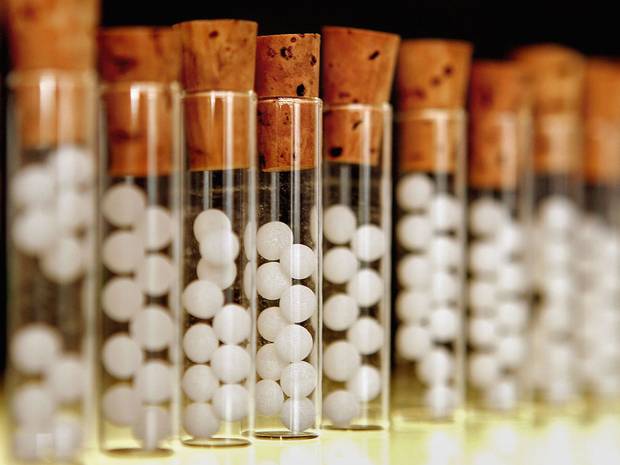The rather amusing news is that Terra-Medica, a producer Homeopathy remedies has had to recalls more than 50 lots across its range because they potentially contained an active ingredient that just might do something – penicillin.
The UK’s Independent reports …
A company making homeopathic remedies in the US has had to recall more than 50 different products from across its range after they were found to contain actual medicine.
Terra-Medica, based in Ferndale, Washington, promises to provide “a wealth of education and high quality health products [to] holistic health care practitioners across the US”.
Yet in a series of tests by the US Food and Drug Administration (FDA), it was found that a variety of tablets, capsules, drops and suppositories – with names like “Pleo-QUENT” and “Pleo-STOLO” – actually contained quantities of penicillin.
It may indeed be tempting to consider homeopathic remedies to be a form of herbal medicine, but it is not and is quite different.
The idea is not ancient, but rather was dreamed up in 1796 by Samuel Hahnemann who based it all on his belief of like cure s like. The thinking is that a substance that causes the symptoms of a disease in healthy people will cure similar symptoms in sick people.
Now this is where things get rather weird. Homeopathic remedies are in fact dilutions. At first Hahnemann tried undiluted doses for provings, but he later advocated provings with remedies at a 30C dilution and so it is these very dilute remedies that are in use today.
OK, so what exactly does 30C mean?
The C scale is in fact logarithmic. Take 1 part of the ingredient, add 100 parts of water, and then vigorously shake by 10 hard strikes against an elastic body. This is called “succession”. This is 1C. Now take 1 part of the 1C and add 100 parts of water, do the same and you have 2C. Keep repeating until you get to 30C.
The claim also is that a solution that is more dilute is described as having a higher potency, and so these more dilute substances are considered by homeopaths to be stronger and deeper-acting remedies.
To help you wrap your head around this, a 12C solution is equivalent to a “pinch of salt in both the North and South Atlantic Oceans”. 13C is one drop of that diluted in all the water on the planet.
In other words, by the time you get to 30C what you are given contains no active ingredients at all.
OK, so let’s put the details of how these remedies are made aside and ask ourselves if there any evidence at all that this actually works?
The short answer is: No
Here is the longer answer:
- Homeopathy lacks biological plausibility … and I think you can now understand why.
- The axioms of homeopathy have been refuted for some time.
- The postulated mechanisms of action of homeopathic remedies are scientifically implausible and also not physically possible
- Although some clinical trials produce positive results, systematic reviews reveal that this is because of chance, flawed research methods, and reporting bias. Overall there is no evidence of efficacy, see here, here and here.
In summary it is at best a placebo.
It thrived and prevailed … why?
Well perhaps because it comes from an age when other medicines would actually harm you, and because these remedies contain nothing at all, they actually do no harm at all. It is still popular, believed to work by some, and so supply and demand kicks in. Since it actually contains nothing at all, it can be freely marketed without any regulations being applied.
There are of course huge risks here. Using it for serious illness or the prevention of malaria instead of real medicine is going to result in some serious harm.
However, what is perhaps the most funny illustration of just how empty this claimed cure actually is, can be seen in the rather public overdose of a homeopathy remedy often conducted by skeptics.
Homeopathy protesters to take ‘mass overdose’ outside Boots
Here is James Randi illustrating this …
